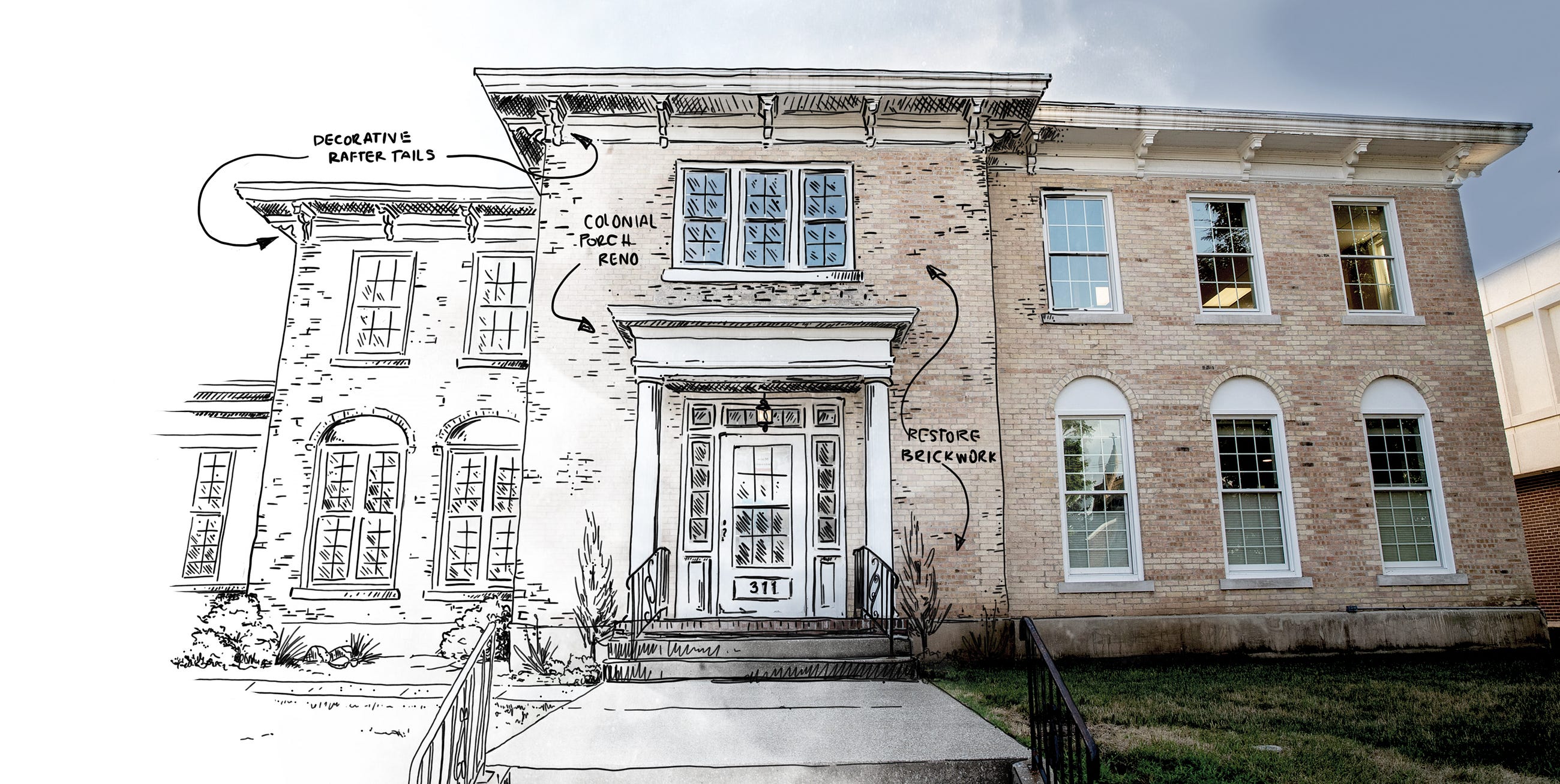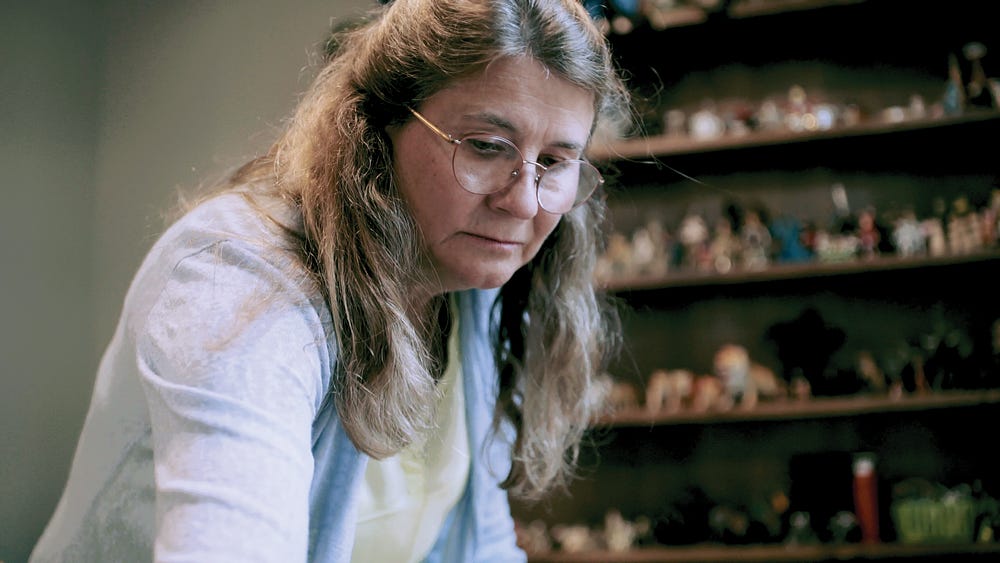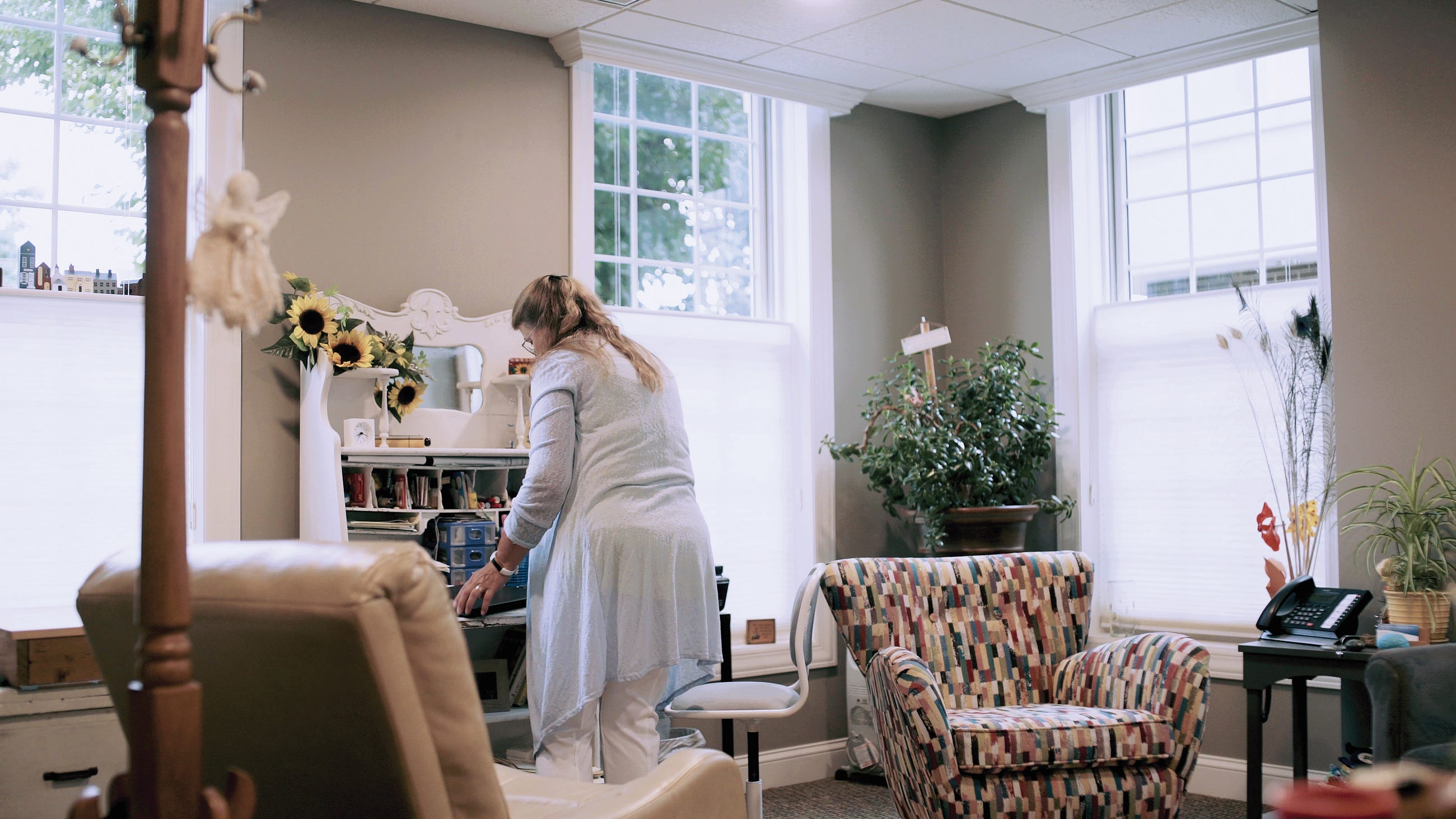The story of helping those in the greatest need.
The room is awash with light. Streaming in from two large windows, filling the homey space with warmth. Joyce Menchinger herself exudes warmth with or without the sun’s presence.

She stands in the entryway. Joyce is soft-spoken and kind. It would be readily apparent to anyone after just minutes that she is the sort of person you’d want to clone in the mental health field. She is patient, humble, and smart as a whip. Before sitting, she offers a tour of the facility.
The building was proud. A place to find comfort and treatment for the mind ought to be proud.
A bright and earthy-colored, two-story building on the corner of 3rd and High, smack dab in the center of Elkhart. Beautiful wood floors and an expansive foyer felt like you were walking into an upper-class historic home. White trim and neutral walls made the space feel rich and clean. Never for a moment would someone think they had entered a mental health facility, and that was the beauty of the space.
Joyce believes in the importance of viewing mental health with the same weight as we do physical health. Samaritan Health and Living Center was founded on a similar principle, to treat the whole person — mind, body, and spirit. While much of the work performed here at Samaritan Center deals with the mind, that lens, that perspective of the whole person, provides an important framework in which to practice.
She continues to show off each space, like a first-time homeowner so proud of each detail. Each room of the space is large and inviting. Smaller offices provide perfect meeting spaces for individual, couples, or family therapy. The spaces all personalized to the taste of the dozen or so licensed staff. Wall art, standing desks, furniture, plants, rugs, each tells the story of the person behind it.
Larger rooms provide space for group treatments and meetings, an important part of the mental health process. Other offices are retrofitted with special waiting areas. The areas are enclosed with knee-walls and allow children and parents to be attended to privately. The space is amazing, a thing of beauty. And no detail was neglected. Around back, a more private entrance allows for some anonymity in the process. Through and through, the Samaritan Center was laid out to help people in any way.


